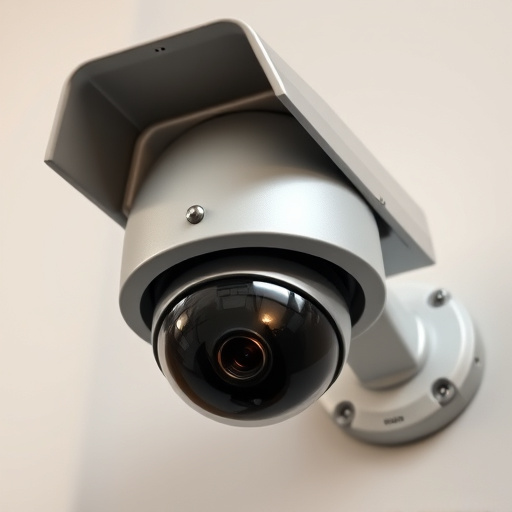Mounting fake security cameras is a cost-effective way to boost home or business security. These realistic decoy cameras deter intruders by creating the appearance of enhanced surveillance without complex wiring or installation. Learn how to strategically place them at effective heights and locations, using adjustable mounts to cover all angles for optimal protection. This guide offers insights on choosing the right camera models, mounting techniques, and regular testing for maximum deterrent impact.
“Uncover the power of professional-grade dummy security equipment, a sophisticated yet cost-effective solution for enhancing home or business safety. This comprehensive guide explores the intricacies of these fake security cameras, their benefits, and diverse applications. From understanding their mechanics to mastering the art of mounting, we’ll navigate the process step by step. Learn how to effectively simulate surveillance without breaking the bank. Additionally, discover legal considerations and best practices to ensure responsible use of dummy surveillance equipment, including expert tips on How to Mount Fake Security Cameras for optimal results.”
- Understanding Professional Grade Dummy Security Equipment
- Benefits of Using Fake Security Cameras
- Types of Fake Cameras and Their Applications
- How to Mount Fake Security Cameras Effectively
- Legal Considerations and Best Practices for Dummy Surveillance Equipment
Understanding Professional Grade Dummy Security Equipment
Professional-grade dummy security equipment, including fake security cameras, serve as an effective deterrent for potential intruders. Unlike their real counterparts, these mimics provide a cost-efficient way to enhance home or business security without the need for extensive wiring and professional installation. Understanding how to mount these devices properly is crucial for maximizing their impact.
Mounting fake security cameras involves careful consideration of placement and angle. Typically, they should be positioned in plain sight, high enough to deter thieves but low enough to capture detailed footage. Using adjustable mounts allows for customization according to specific needs, ensuring the camera covers all angles effectively. This simple step can significantly contribute to creating an impression of a well-secured environment, often misleading would-be criminals and enhancing overall security measures.
Benefits of Using Fake Security Cameras
Using fake security cameras, also known as dummy or decoy cameras, offers a range of advantages for property owners and businesses looking to enhance their security measures without breaking the bank. One of the primary benefits is their ability to act as a powerful deterrent against potential criminals. Visually displaying these realistic replicas can significantly reduce the likelihood of actual break-ins or thefts, as intruders may perceive them as an active surveillance system in place.
In terms of How to Mount Fake Security Cameras, the process is surprisingly straightforward and adaptable. These cameras are designed to be versatile, allowing for easy installation almost anywhere. From windowsills and walls to trees and ceiling corners, strategic placement can maximize their effectiveness. Additionally, they can be combined with real security systems, providing an extra layer of protection while also serving as a visible reminder of the property’s surveillance capabilities.
Types of Fake Cameras and Their Applications
Fake security cameras, also known as decoy or dummy cameras, come in various types designed for different applications. These include realistic-looking LED cameras with motion sensors, often used to deter burglars and create a false sense of security; and smaller, non-recording models that serve as visual deterrents in areas where surveillance is not needed but added visibility is desired. Some are even designed to mimic the look of real CCTV cameras from various manufacturers, allowing them to blend seamlessly into any environment.
When it comes to mounting fake security cameras, the process can be straightforward or involve more complex setups, depending on the specific camera and desired placement. Simple options include attaching them to walls or ceilings with adhesive or screws, while more advanced installations might involve using brackets or mounts designed for outdoor or indoor use, respectively. How to Mount Fake Security Cameras guides users through these steps, ensuring the decoy cameras are positioned optimally to maximize their deterrent effect without compromising aesthetics.
How to Mount Fake Security Cameras Effectively
Mounting fake security cameras effectively is a crucial step in creating an illusion of enhanced security for your property, deterring potential intruders. The key to successful installation lies in discretion and realism. Position the cameras at strategic locations, mimicking the placement of real surveillance equipment. Ensure they are high enough to avoid easy tampering but not so high that their presence becomes obvious. Use mounting brackets or mounts designed to blend with your environment, such as those resembling electrical boxes or light fixtures.
When installing these dummy cameras, pay attention to angles. Just like real security systems, the lenses should face key areas of interest without obstructing views. Consider using models with infrared capabilities for night vision effects, adding to their realism. Regularly test the equipment to ensure it appears functional, further enhancing the deception.
Legal Considerations and Best Practices for Dummy Surveillance Equipment
Professional-grade dummy security equipment offers a cost-effective way to enhance real surveillance systems. By strategically placing fake cameras, you can significantly deter crime and create the illusion of a well-protected environment. As discussed, understanding the benefits and types available, along with proper mounting techniques (such as How to Mount Fake Security Cameras effectively), ensures both visual deception and legal compliance. Remember that while dummy equipment is useful, it should complement, not replace, actual security measures for comprehensive protection.
